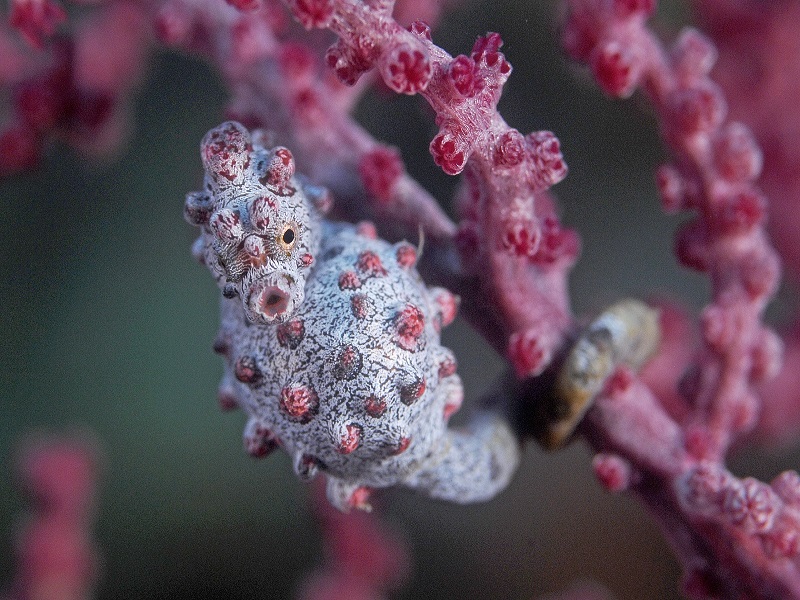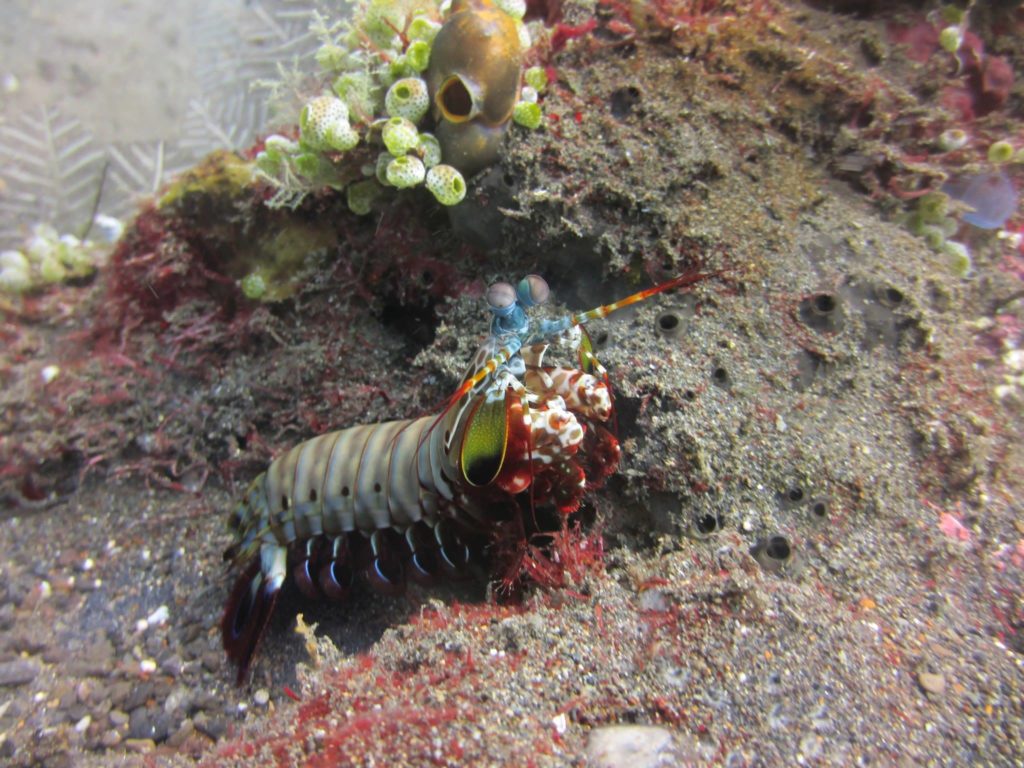
What is Macro Diving?
What do you need to macro dive?

Macro vs Muck Diving
Oftentimes used interchangeably, there deserves to be a distinction between macro diving and muck diving. Both pursuits celebrate the smaller, often overlooked inhabitants of the ocean, but they differ significantly in the environments they explore and the experiences they offer.
Macro Diving
Involves exploring all areas with tiny critters. From vibrant coral reefs, or other visually appealing underwater environments, to the depths of muck diving, where you really have to search for what you’re looking for. Macro diving can be done around the world, anywhere the underwater environment is rich in biodiversity. It can almost be considered as the umbrella theme of tiny critter diving where muck diving is a subset of.
Muck Diving
Specifically targets areas that, at first glance, might seem less enticing. These dive sites are often characterized by silty bottoms and less colorful surroundings — think volcanic sand and detritus-laden seabeds. Despite their bleak appearance, these environments are hotspots for some of the most unusual and specially adapted marine life in the world. A true space to discover the weird and wonderful of the ocean. Muck diving sites like Lembeh Strait are renowned for their unique ecosystems, where divers can discover creatures that are not only rare but also exhibit fascinating survival adaptations.

Macro Diving in Bali
Luckily for us here in Bali, we have it all. From drift dives to wrecks, huge mola mola to tiny fanciful harlequin shrimp the diverse landscape really does have something for everyone. Diving in Bali means some incredible spots with the perfect environments to hunt for some rather special critters. For instance, on the east coast in places such as Padang Bai and Tulamben, wherever a river runs into the ocean, the environment is rich with macro life. If you know what to look for you can expect to find some truly amazing nudibranchs, seahares, shrimps and frogfish too!
What Critters Can You Spot Around Bali?
For an island that gets a lot of talk about mantas and mola mola, Bali does have many magical tiny creatures floating around. Often in the beginning of our scuba diving journeys Nudibranchs get a lot of air time. However there are so many other small creatures worth discovering.
- Pygmy Seahorse (Hippocampus bargibanti): Often found clinging to colorful sea fans, these tiny seahorses are a marvel of camouflage. Their bodies mimic the texture and hue of their coral homes, making them a delightful challenge for divers to spot. A true underwater Where’s Waldo situation.
- Frogfish: They use their textured skin to blend seamlessly with the rocky seabed or coral surroundings. Typically they remain motionless, waiting to ambush prey that ventures too close. If you get a good enough look at them, specifically the hairy frogfish, they tend to resemble grumpy old men. At least that was my takeaway from my last encounter!
- Nudibranchs: Bali’s waters host an amazing variety of these colorful sea slugs. An easy specimen if you’re just starting your underwater photography journey. Known for their brilliant colors and intricate patterns, nudibranchs are scuba diver’s favorite.
- Juvenile Ghost Pipefish: sometimes found hidden in small gorgonians or feather stars, they are incredibly ornate, bizarre creatures. Usually found floating around with their nose pointed downward and very hard to spot.
Pro tip: dive with a guide who has a knack for spotting tiny critters!
Tips for Spotting Macro Life in Bali
Late afternoon dives are a great time for critter hunting. There tend to be fewer divers around, and a change in marine life. Look for piles of rubble that look out of place to see who comes out of their home. If you’re lucky you just might spot a mimic or a wonderpus.
For further research on how and what to look for, pick up an identification book for reference. A copy of the ‘Reef Creature Identification – Tropical Pacific’ is a great choice!
Critter finding, better known as macro diving, is a special skill– one you can develop overtime, but if you are not a regular diver it might be hard to hone in on that skill. Diving with a dive center that knows the ins and outs of their different dive sites, and the habitats they provide is a great cheat code for finding these tiny creatures. There is nothing better than beginning guided around a dive site and having your DM frantically wave their hands to show you the awesome critter they just found. Contact us today to get a spot on our next dive trip so you can start your own macro adventure!




